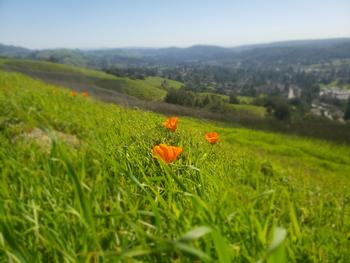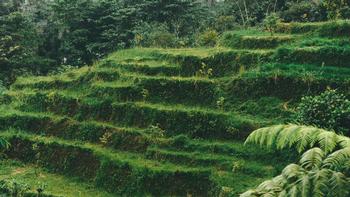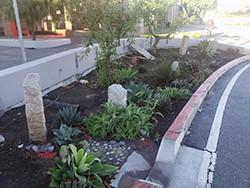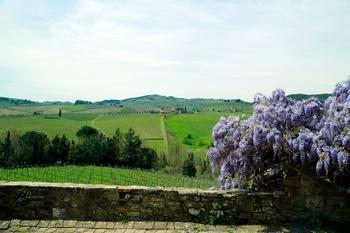Spring 2023
Keeping your Hill in Place: Erosion control on hillsides
by Hedwig Van den Broeck

Courtesy H. Van Den Broeck
Many of our California hillsides have become unstable due to previous atmospheric river events, and some have even started to slide. Erosion is harmful because it puts local bodies of water and storm water management systems in danger, as well as your property and that of your neighbors. To prevent soil erosion and the loss of priceless topsoil, it is crucial to control erosion on hillsides. Many of us hurried to get sandbags or other temporary solutions this winter. It is preferable however to implement longer-term fixes that can maintain the stability of your hillside.
Here are some strategies for erosion control on hillsides:
Plant vegetation
On hillsides, the roots of grasses, shrubs and trees aid to stabilize the soil and stop erosion, and their leaves and branches act as a covering to shield it from the raindrops. Deep-rooted shrubs are great but more aggressive groundcovers that crawl and root along the top of the soil are best at reducing topsoil loss.
Terracing

Courtesy Unsplash-Utsman-media-DlNOFWHnaO0
Terraces cut across the length of a hillside perpendicular to the slope. It involves cutting the slope into steps or terraces that are secured in place by retaining walls, stacked rock, or another material that is preferably non-flammable. This method aids in reducing water flow down the hillside and halting soil erosion. Additionally, terracing allows for creating paths for easier maintenance. It is also a crucial firescaping method. The shorter the slope, the smaller the flame. Wildfires make hillsides less stable – because of the burned vegetation many hillsides can slide especially if heavy rainfall follows a fire. Terraces require regular maintenance to remove debris and sediment which could allow water to seep through and erode the terrace.
Mulching
By absorbing the impact of raindrops and slowing the flow of water down a hillside, mulch applied to the soil's surface can help reducing erosion. Organic materials such as wood chips, leaves (preferably composted) can be used as mulch. You can read more on the benefits of using mulch in another article written by Anne Sutherland.
Use erosion control blankets
Biodegradable materials can be used to make erosion control blankets, which are intended to be spread over the soil to stop erosion. They support moisture retention, shield the soil from wind and water erosion, and give vegetation a stable surface to grow on. These blankets need to be replaced regularly.
Set up drainage techniques

Courtesy H. Van Den Broeck
You can help stop erosion and guide water runoff from hillsides by constructing drainage systems such as French drains, dry creeks, swales or ditches.
Ditches are vital on steeper slopes.
Dry creeks are also ditches but covered with rock. Dry creeks are less expensive to build and can also function as a fuel break during a wildfire. Plant-filled ditches, referred to as
swales, are very effective at diverting and slowing down runoff as well as removing debris, sediment, and toxins.
Avoid compacting the soil on hillsides
The soil's capacity to absorb water is diminished by soil compaction, which can result in increased erosion and topsoil loss. It is better to use designated pathways when walking on or maintaining your hillside.
By implementing these strategies, you can effectively control erosion on hillsides and preserve the quality of the soil.
https://ucanr.edu/sites/fire/Recovery/Revegetation/Erosion/
Terracing Hillsides: https://marinmg.ucanr.edu/PLANTS/MARIN_SETTINGS/Hillsides/
https://marinmg.ucanr.edu/Great_Gardening_Information/Gardening_Tips_Techniques_and_Terminology/Gardening_Basics/Preventing_Erosion/
https://ucanr.edu/blogs/blogcore/postdetail.cfm?postnum=19450

Courtesy H. Van Den Broeck




